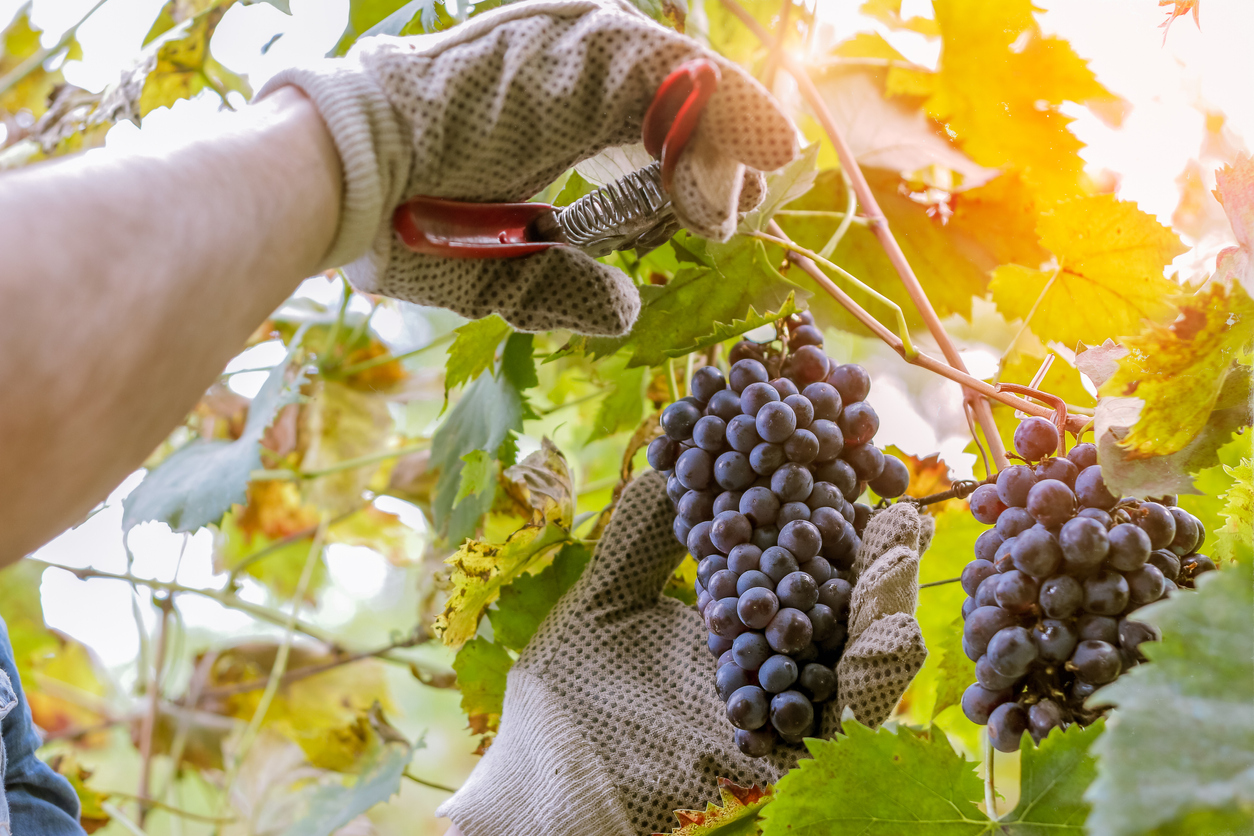
Harvesting Grapes
Harvesting Grapes
How do you know when your grapes are ripe for the picking? The answer depends on the type of grapes you’re growing and how you plan to use them. Are you growing wine grapes? That’s the most complicated process, involving an assessment of the fruit’s pH and sugar content. But if you’re growing grapes to make jelly or just to have as fresh fruit, the best way to determine their ripeness is to pick a grape off the vine and taste it. Look for a bunch of grapes that have developed their final color and look ripe. Then sample one or two. If they pass the taste test, then get out your pruning shears and snip off the whole bunch. Be sure to handle your grape clusters with care so you don’t bruise the fruit. Remove any discolored or damaged berries right away.
Timing is everything
When you know your grapes are ready for harvest, check the weather forecast. You should harvest your grapes on a warm, dry day. This will ensure better sugar content, better taste, and a lower likelihood of mold.
The exact harvest time for your grapes will depend on where you are, the length of your growing season, the crop load of the variety, as well as the purpose of the harvested fruit. In general, though, there are a few key indicators you can check:
Taste: If they taste sweet, they’re ready for harvest. You can start checking your vines 3-4 weeks before your anticipated harvest date. Taste a grape or two a day until the grapes hit that magic flavorful level. Try to take your samples at the same time of day, and be sure to sample from several areas of the vine.
Be sure your grapes are fully ripe before you harvest them; unlike some other fruits, grapes do not continue to ripen once they’re off the vine.
Size: When your grapes reach their full size, they’ll be just a little less firm to the touch, indicating they’re ripe (or close to it). Perform a taste test.
Color: If you’re harvesting grapes for jelly or wine making, you need to harvest them at just the right time for maximum sweetness. Color is one of the indicators for ripeness, but it’s not necessarily the most reliable; some grapes change color early in their growing process, well before they’re ripe. But when grapes are completely ripe, you’ll notice their whitish coating is more pronounced and their seeds (if they have them) will turn from green to brown. Of course, the seed color change will only be helpful if you can see through the grapes’ translucent skin. The best ripeness indicator at this point? Taste them.
Birds: Birds love grapes, and our feathered friends have an innate sense of when grapes are ripe for eating. If you head out to your vines and you have a lot of birds for company, plan to bring in your grape harvest in the next couple of days — if you want to have any for yourself.
Grapes for Jelly
If you’re growing grapes for jelly, it’s OK to harvest them a little before they’re fully ripe. You’re going to be adding sugar to make your jelly, so you don’t have to worry about the grapes being at their peak sweetness. However, if you do wind up harvesting fully sweet grapes, you can just adjust the sugar level when you make your jelly.
Grapes for Raisins
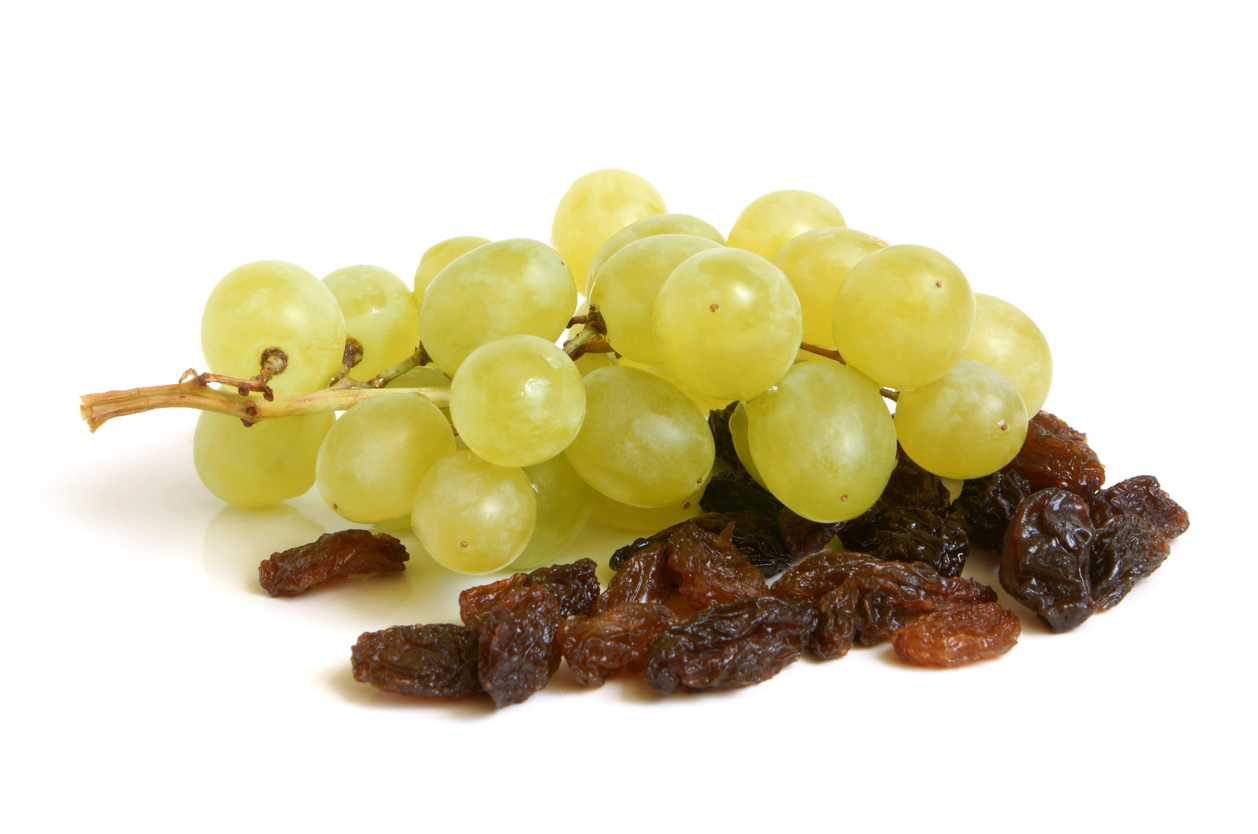
Grapes and raisins
If you’re tired of boxed raisins and you’d like to make your own, this is the one time you can leave your grapes on the vine a little longer — say, 3-4 days. This will let the grapes develop a higher sugar content, which will give you sweeter raisins. The only thing to be careful of, though, is our feathered friends. If you plan to leave your grapes out a little longer once they’re fully ripe, cover your vines with fine mesh netting or floating row covers staked down to the ground to keep the birds out.
Storing & Preserving Grapes
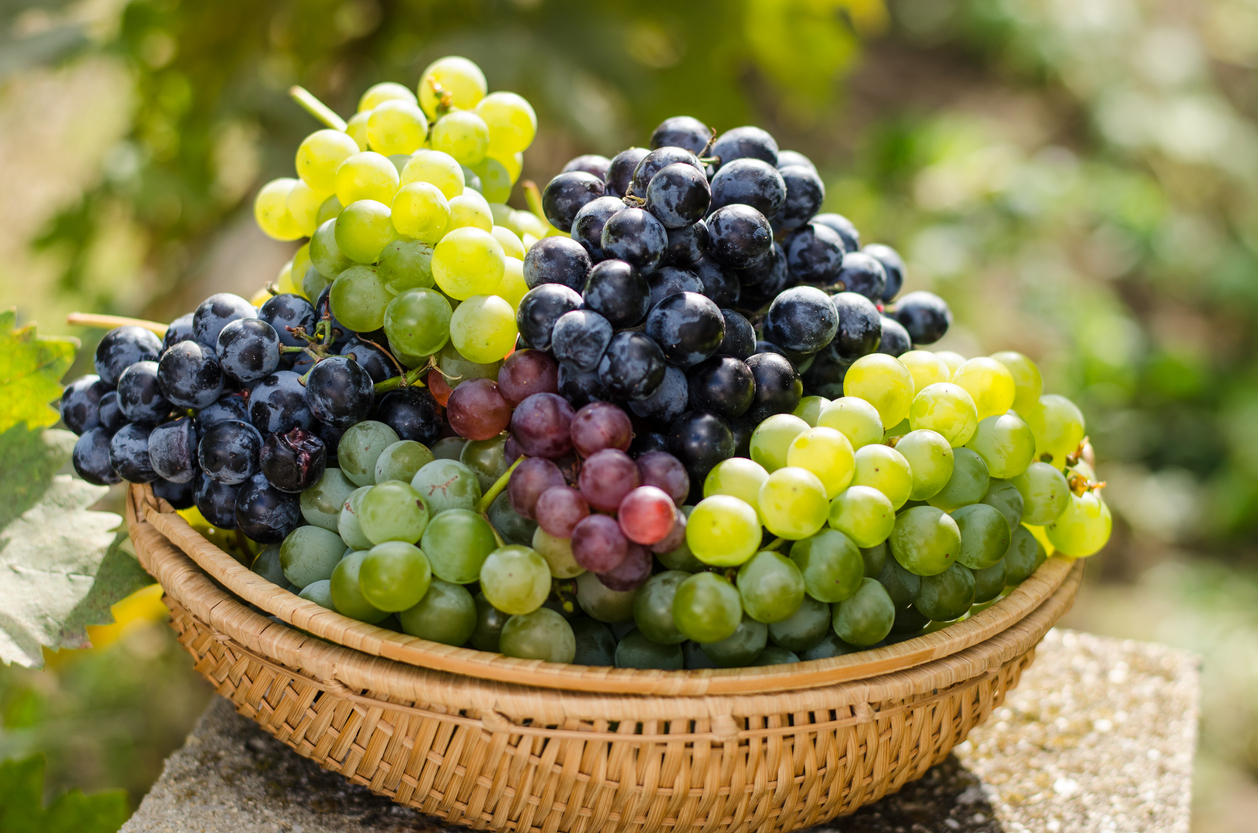
Grapes of various colors in a basket
You have a wide variety of choices when it comes to storing and preserving your grapes.
Storing Your Grapes
Rule #1 of storing grapes: Don’t wash them until you’re ready to use them. Added moisture will make the grapes rot faster.
Fridge
Grapes like cold temperatures — really cold. In general, you can store your grapes in a cold fridge (between 32 degrees – 40 degrees F) with high humidity (80% – 90%) for up to 2 weeks. However, some varieties will keep up to 2 months in the fridge, but watch them closely. Keep them in a produce bag with holes so the grapes get some air circulation. The best spot for your grapes is in the back of the crisper drawer; that’s one of the coldest spots in the fridge. Reminder: Do not wash them until you are ready to eat them.
Freeze
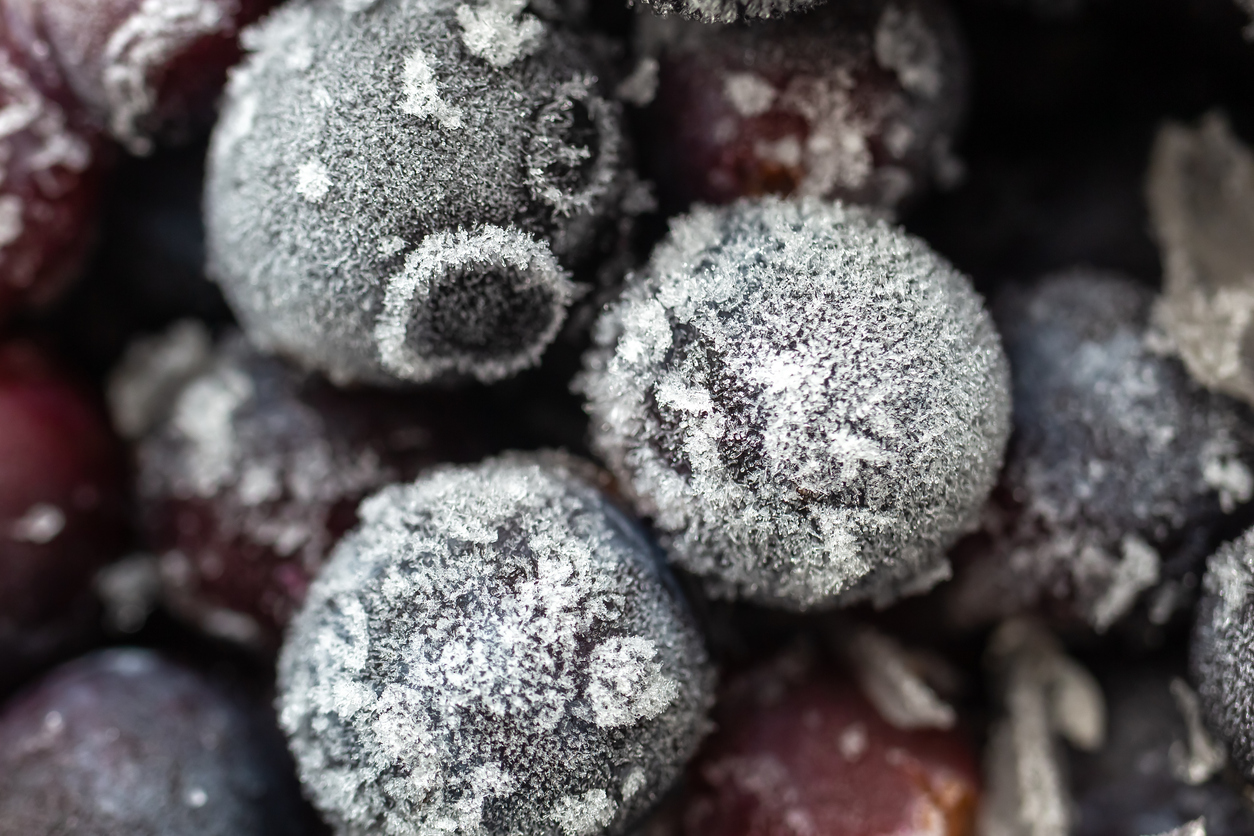
Frozen Grapes
You can store small batches of grapes in the freezer for up to 7 weeks, in perforated bags. If your freezer has a humidity control, set it to 90%. Wash your grapes when you take them out of the freezer.
Chill
If you have a cool, dry cellar, you can store a large quantity of grapes in clean, dry cardboard boxes. Line the boxes with clean straw to keep the grapes from squishing each other and to allow for some air circulation. Caution: Grapes absorb the smell of whatever is around them, so find them a spot where they can have some alone time. Also, be sure you protect your grapes from rodents and insects who will be happy to feast on your crop if you don’t deter them.
Preserving Your Grapes
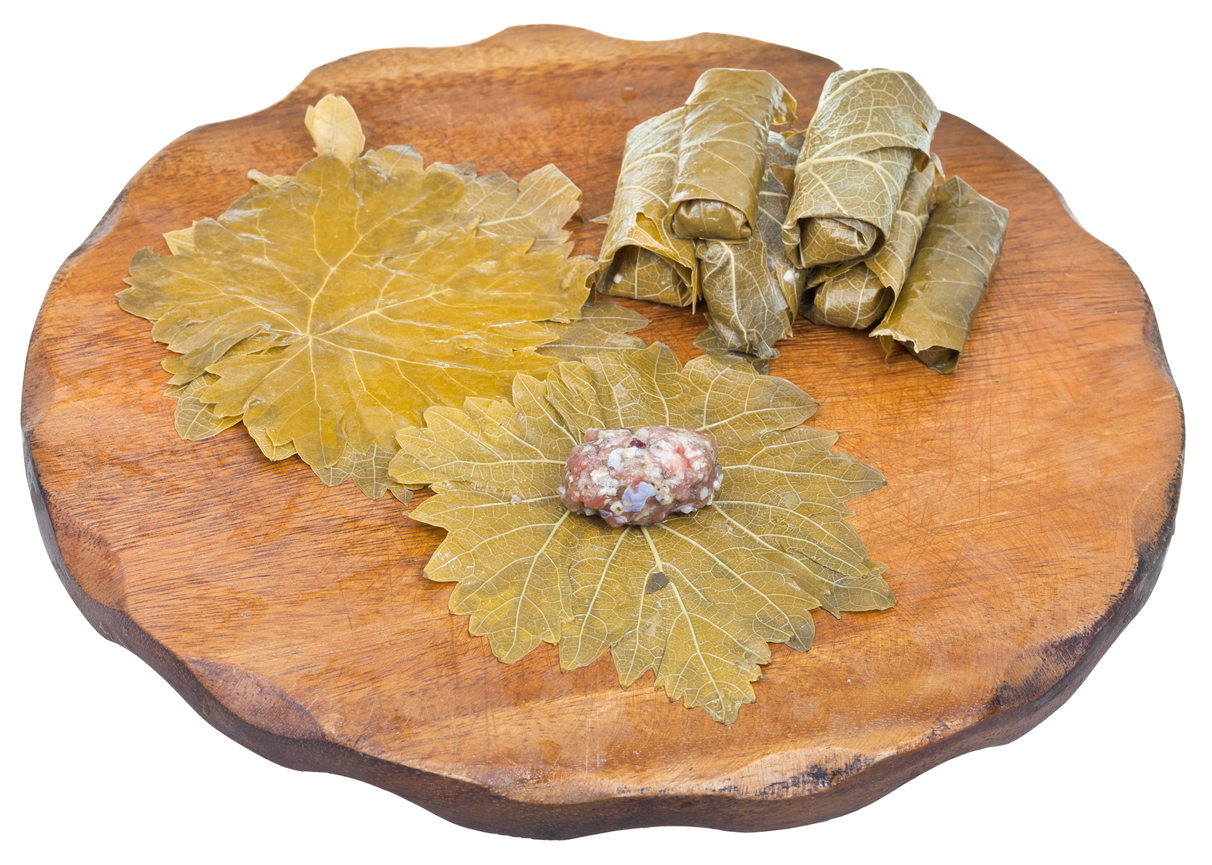
Cooking of Caucasus meal – dolma from pickled grape leaves and mince
The first rule of thumb is to preserve your grapes within 24 hours of picking them; this ensures they’ll retain the most flavor.
One of the most common ways we preserve grapes is to make grape jelly. You’ll find guidelines for making jelly in the recipe section of this collection.
Other ways you can preserve grapes include:
- Jam them: Making jam is less work than making jelly. Just use a food mill to separate the seeds and skins from the juicy insides, a little water, sugar, lemon juice and pectin, and you’re all set. Note: this does require some knowledge of hot water bath canning.
- Raisin them: Make raisins in a dehydrator, in the oven — even on the windowsill! 24 hours in a dehydrator will do the trick, but if you don’t have a dehydrator, then you can just put clean, blanched grapes in a single layer on a wire rack or screen and set your oven to 135° F. Raisins can keep for months, even years, in a tightly sealed glass jar.
- Pickle them: A little white wine vinegar, sugar, and spice, and you’ll have a tasty, unique treat! Be sure to let the vinegar & sugar mixture cool completely before you pour it over your grapes. Then pop them into glass jars, put them in the fridge, and enjoy them within a couple weeks.
- Juice them: Homemade grape juice is easy to make — and it’s delicious! Grapes, sugar, boiling water, and a soak in a hot water bath canner, and you’ll have the tastiest grape juice ever! The best part of making your own grape juice is you get to control how sweet it is.
- Verjus them: Verjus is a way for you to put unripe grapes to good use; it’s a sort of vinegar made from the juice of unripe grapes. This is a common product of many vineyards, when wineries want to thin their crop to improve the quality of the grapes left on the vine. It’s a bit of work to make (you’ll need a food mill), but it makes a great salad dressing and can last for months in a tightly sealed jar in the fridge.
- Leaf them alone: Don’t forget the grape leaves! If you love stuffed grape leaves, then it’s worth preserving them. Trim them, blanch them, then cover them with a solution of boiling water and lemon juice. Store in the fridge and use within a few weeks. If you want to store them longer, process them in a hot water canning bath.
What signs do you look for when your grapes are ready to harvest? Please tell us how you store your grapes and your favorite ways of preserving them.


 Previous
Previous


more of a question. My grapes are starting to cluster nicely and are a very small green stage right now. When is a good time to cover with netting. Last year just around labor day I looked at them and decide I was going to pick them next day. Somewhere before noon I guess the birds flew in and presto..nothing left. I have an owl up this year in the vines and I bought the netting at the beginning of the season. Thanks